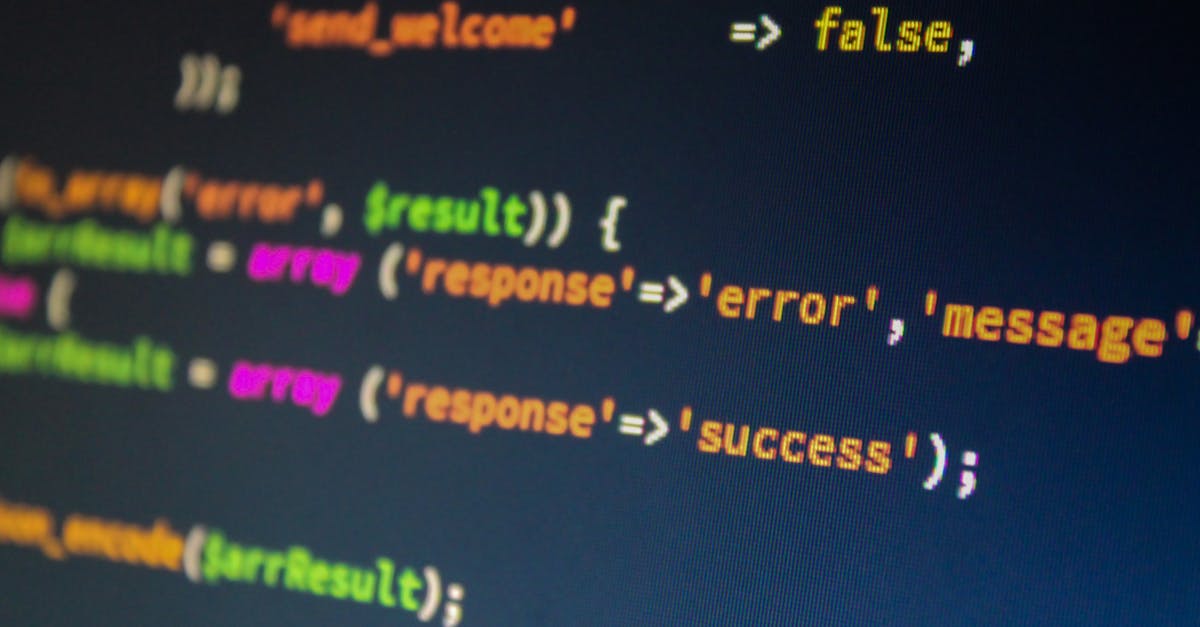Dec 3, 2024
Error Handling Best Practices

Error handling is an essential aspect of software development that is often overlooked until problems arise. How an application handles errors can significantly impact user experience, system stability, and overall performance. Efficient error handling not only helps in identifying and resolving issues promptly but also enhances the overall reliability of the software.
In the first place, understanding common error handling best practices is crucial for developers to build robust and resilient applications. Proper error handling involves anticipating potential issues, gracefully managing unexpected situations, and providing meaningful feedback to users when errors occur. By implementing a structured approach to error handling, developers can streamline debugging processes, minimize downtime, and improve the overall quality of their software.
One key aspect of effective error handling is thorough logging. Logging error details, along with contextual information, is essential for developers to troubleshoot issues efficiently and gain insights into the root causes of errors. Furthermore, logging can also help in monitoring application performance, tracking user interactions, and identifying trends that may indicate underlying problems.
Moreover, implementing consistent error codes and messages across the application can greatly simplify the debugging process and enhance the user experience. Clear and descriptive error messages not only help developers pinpoint issues more quickly but also enable users to understand what went wrong and how to proceed. By providing informative error messages, developers can empower users to take appropriate actions and reduce frustration.
Consequently, beyond solely managing errors when they occur, it is essential for developers to proactively test error scenarios during the software development lifecycle. By conducting thorough testing, developers can identify potential vulnerabilities and enhance the robustness of the application. This approach allows for preemptive measures to be implemented, thereby reducing the likelihood of errors affecting end-users.
Equally important, error handling mechanisms need to be regularly reviewed and updated to ensure their relevance as the software evolves. As applications grow in complexity and functionality, error handling strategies must adapt to accommodate new features and potential failure points. Regularly revisiting and refining error handling processes can significantly contribute to the long-term stability and performance of the software.
Moreover, documenting error handling procedures is a critical aspect that should not be overlooked. Creating structured documentation that outlines how errors are handled, logged, and communicated can assist developers in maintaining consistency and understanding the rationale behind certain error-handling decisions.
In reality, error handling should not be viewed as a one-time task but rather as an ongoing practice that evolves alongside the software. By fostering a culture of continuous improvement in error handling strategies, developers can elevate the quality and reliability of their applications.
Another key point to consider is the importance of incorporating feedback loops into error handling processes. By analyzing error reports, user inquiries, and system logs, developers can glean valuable insights into recurring issues and areas for enhancement. Utilizing this feedback to refine error handling mechanisms can lead to more effective bug resolution and improved user satisfaction.

Effective Ways to Manage Errors
With this in mind, integrating automated error monitoring tools into the development process can significantly enhance error detection and resolution. These tools can provide real-time insights into application performance, flag potential issues before they impact users, and offer detailed reports for developers to analyze. By leveraging automated monitoring solutions, developers can proactively address errors, optimize system reliability, and continuously fine-tune their error handling strategies.
Additionally, establishing a clear escalation path for critical errors is essential for ensuring timely response and resolution. By defining escalation procedures that outline responsibilities and actions in case of severe system malfunctions, developers can mitigate risks and safeguard user experience. Creating a structured framework for escalating critical errors can help prevent downtime, protect sensitive data, and maintain the integrity of the software.
Furthermore, collaboration among development, operations, and support teams is crucial for effective error handling. By fostering cross-functional communication and collaboration, teams can work together to identify, prioritize, and resolve errors efficiently. This collaborative approach ensures that all stakeholders are aligned in addressing errors, minimizing delays, and delivering timely solutions to users.
In essence, error handling is a multifaceted process that requires careful planning, continuous refinement, and proactive measures to ensure software reliability and user satisfaction. By following best practices, leveraging automation, fostering collaboration, and embracing a culture of improvement, developers can build robust applications that effectively manage errors and provide a seamless user experience.
To summarize, effective error handling is a critical aspect of software development that should be integrated throughout the entire lifecycle of an application. By implementing best practices, such as thorough logging, consistent error messaging, proactive testing, continuous refinement, and collaboration among teams, developers can enhance the reliability, stability, and performance of their software. Embracing a culture of improvement and leveraging automation tools can further optimize error detection and resolution processes, leading to a seamless user experience and increased user satisfaction.
In conclusion, error handling is not just about addressing issues as they arise but about proactively preventing errors and continuously improving error management strategies. By prioritizing efficient error handling practices, developers can build resilient applications that effectively manage errors, enhance system reliability, and deliver a positive user experience. Error handling, when done right, is an invaluable component of software development that ensures the long-term success and usability of applications in a rapidly evolving technological landscape.

Title
I'm a paragraph. Click here to add your own text and edit me. It's easy.

Title
I'm a paragraph. Click here to add your own text and edit me. It's easy.

Title
I'm a paragraph. Click here to add your own text and edit me. It's easy.
